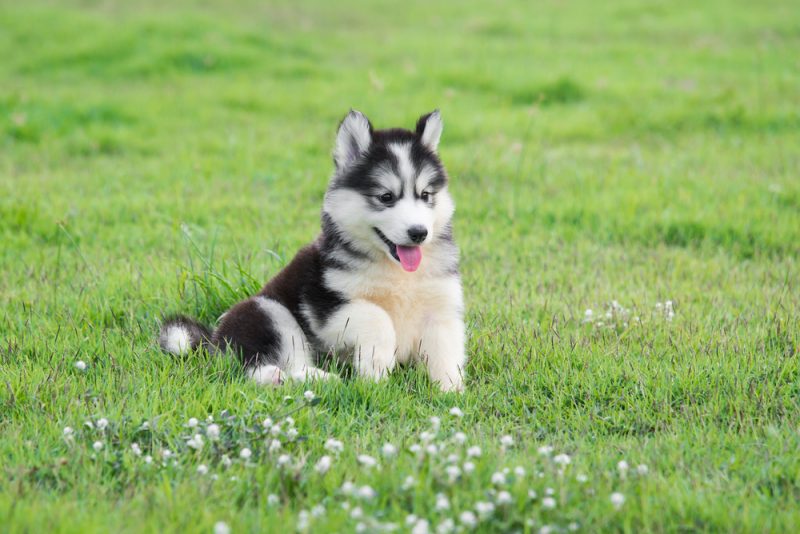How Old Is 1 in Dog Years? Vet-Approved Guide to Each Size of Dog
The post How Old Is 1 in Dog Years? Vet-Approved Guide to Each Size of Dog by Chantelle Fowler appeared first on Dogster. Copying over entire articles infringes on copyright laws. You may not be aware of it, but all of these articles were assigned, contracted and paid for, so they aren’t considered public domain. However, we appreciate that you like the article and would love it if you continued sharing just the first paragraph of an article, then linking out to the rest of the piece on Dogster.com.
Click to Skip Ahead
Many people are surprised to learn that, contrary to popular belief, one year of human life isn’t actually equal to seven dog years. Depending on their size, a one-year-old dog would be around 12 to 15 years old in human years.
While the 7:1 calculation is easy, it’s not entirely accurate as it doesn’t take a dog’s size into account. Dogs age differently depending on their breed and size, so a new calculation considering this information was necessary.
Read on to learn more about converting dog years to human years.
Size:
Age in human years:
Small breed (<20 lbs or less):
15 years
Medium breed (21 to 50 lbs):
15 years
Large breed (51 to 100 lbs):
15 years
Giant breed (100+ lbs):
12 years
Source: Almanac.com
How to Calculate Dog Years to Human Years
The old method for calculating dog years to human years was based on the outdated assumption that humans live to be around 70 and dogs live to be 10. We now know that a dog’s lifespan can vary greatly depending on size and breed. So, while the 7:1 ratio calculation was pretty easy, quick, and convenient to do, it’s just not as accurate.
Instead, the American Veterinary Medical Association recommends using these rules to get your pup’s age in human years:
The first year of a medium-sized pup’s* life is equivalent to around 15 human years
The second year adds around nine human years
Every human year after is equal to four or five for a dog
*“Medium-sized dog” is assumed to weigh 21 to 50 pounds
As you may have noticed in our chart above, a one-year-old giant dog (one that weighs 100+ pounds) is only considered 12 years old in human years, while their small, medium, and large breed counterparts are “older” at 15 years.
If you were to look at the entire chart on the Almanac website, however, you’d see that large dogs do eventually catch up. By their third birthday, they’ll be aging faster in human years than smaller dogs. For example, when they hit their fifth birthday, giant dogs are thought to be around 45 in human years. In comparison, small, medium, and large breeds are just 36.
Image Credit: ANURAK PONGPATIMET, Shutterstock
What’s the Science Behind Dog vs Human Years?
Researchers have discovered a relatively new concept in aging that suggests that a human’s DNA undergoes chemical modifications as they age to create an “epigenetic clock.” Scientists believe that looking at the addition of methyl groups to specific DNA sequences can track a human’s biological age. This takes into account the toll that a poor lifestyle, genetics, and disease take on our bodies.1
But how does this relate to dog aging? Well, dogs also have epigenetic clocks. A recent study looked at the methylation patterns in 104 Labrador Retrievers and found that dogs and humans share similar age-related methylation in some genomic regions. The research found that specific gene groups involved in development are methylated similarly as both species age.2
Scientists already understand that dogs can develop similar diseases and experience age declines comparable to those of humans. However, this study may suggest that both species experience similar molecular changes as they age.
The results suggest that methylation can work as a diagnostic age readout and a cross-species translation for physiological aging milestones.
The Life Stages of a Dog
The life stages of a dog can vary from source to source. However, according to the American Animal Hospital Association (AAHA), every dog goes through four distinct life stages, each with its own challenges and focuses. It is essential to also recognize that every dog breed will hit these stages at a different age.
Puppy
Image Credit: Zanna Pesnina, Shutterstock
Proper, tailored nutrition should be the emphasis during the puppy stage to support a dog’s rapid growth period. Socialization and training are also critical to promote positive behaviors.
Young Adult
Image Credit: jcburke, Shutterstock
When dogs hit the young adult stage, they can begin transitioning to an adult diet. Socialization and training should be continued. Regular dental care is necessary to prevent periodontal disease and routine veterinary visits will help make sure your dog’s health is on track.
Mature Adult
Image Credit: Hanna Borysenko, Shutterstock
Adjustments to a mature adult dog’s diet may need to be made to accommodate changing metabolisms. Owners should be diligent about monitoring for age-related health problems and continue with regular veterinary visits.
Senior
Image Credit: Suchavadee, Shutterstock
Senior dogs may require a special diet to address aging organs and joint health. More regular visits to the vet would be beneficial to keep on top of potential developing health issues.
Life Span by Breed Size
Size:
Average life span:
Small breed (<20 lbs or less):
10-15 years
Medium breed (21 to 50 lbs):
10-13 years
Large breed (51 to 100 lbs):
8-12 years
Giant breed (100+ lbs):
8-10 years
Source: American Kennel Club
Key Factors That Affect the Dog’s Aging Process
Regular preventative veterinary care is vital to helping your dog live a longer and healthier life. The better you are at keeping up with the annual wellness exams, the easier it is for your veterinarian to establish a baseline for your pup’s health. This baseline allows them to pick up on any subtle changes to your dog’s condition before they get out of control.
Ensuring your pup receives quality nutrition designed for their life stage and maintains a healthy body weight can go a long way in slowing the signs of aging. A 2018 study found that de-sexed overweight dogs have shorter lives.
Conclusion
A one-year-old dog is anywhere between 12 and 15 years old in human years, depending on their size and breed. The number of human years accumulates quickly for dogs during the first few years of their lives, but thankfully, it does taper off.
Converting a dog’s age into human years is more complicated than once thought, but one thing is for sure: our beloved canine companions age much faster than we would ever want them to.
Featured Image Credit: anetapics, Shutterstock
The post How Old Is 1 in Dog Years? Vet-Approved Guide to Each Size of Dog by Chantelle Fowler appeared first on Dogster. Copying over entire articles infringes on copyright laws. You may not be aware of it, but all of these articles were assigned, contracted and paid for, so they aren’t considered public domain. However, we appreciate that you like the article and would love it if you continued sharing just the first paragraph of an article, then linking out to the rest of the piece on Dogster.com.




